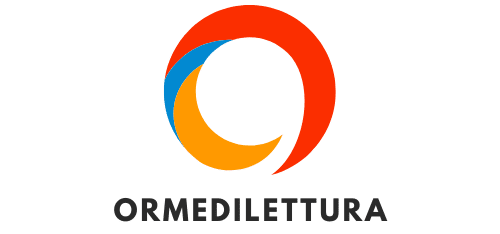What Strategies Can Be Used to Finance Green Retrofit Projects in Commercial Real Estate?

As we find ourselves in a world increasingly conscious of its carbon footprint, the commercial real estate sector faces a critical challenge: how to finance green retrofit projects for existing buildings. Retrofitting, or making modifications to existing buildings to increase their energy efficiency, is a popular solution to reduce carbon emissions. This strategy requires significant funding. However, with innovative financing solutions and strategies, these projects become feasible and attractive for property owners and developers. In this article, we will explore several strategies that you can use to finance green retrofit projects in commercial real estate.
Property Assessed Clean Energy (PACE) Financing
Property Assessed Clean Energy (PACE) is an innovative financing mechanism that allows commercial (and residential) property owners to finance up to 100% of their energy improvement projects, including green retrofits. Initiated by local or state governments, PACE programs provide long-term financing that matches the useful life of the project, usually between 10 to 20 years.
Dans le meme genre : How to Design Real Estate to Address the Special Needs of Autistic Individuals?
PACE financing is attached to the property, not the property owner. This means that the repayment obligation can be transferred to the next owner if the property is sold before the end of the repayment term. This feature makes PACE an attractive option for property owners who may not plan to hold onto their properties for the long term.
With PACE, you can avoid the high upfront costs of retrofit projects and repay the investment over an extended period. This approach can significantly improve the economic viability of green retrofit projects.
A lire en complément : How to Integrate Pet-Friendly Amenities in Luxury Condominiums?
Energy Service Agreements (ESAs)
Energy Service Agreements (ESAs) provide another attractive option for financing green retrofit projects. Under an ESA, a third-party service provider fronts the capital for the retrofit project. The service provider will then maintain and monitor the energy-saving equipment, ensuring that it achieves the promised efficiency gains.
The property owner repays the service provider over time through an agreed-upon portion of the cost savings realized from the energy efficiency upgrades. This arrangement allows property owners to upgrade their buildings without the need for significant upfront capital.
ESAs are performance-based contracts, meaning the service provider is incentivized to ensure the retrofit project delivers the expected energy savings. This feature provides an additional layer of security for property owners.
On-Bill Financing
On-bill financing is another innovative approach to financing green retrofit projects. Through this program, a utility company provides the upfront capital needed for the retrofit project. The property owner then repays the utility company through a charge added to their regular utility bill.
This model provides several benefits to property owners. First, it does not require any upfront capital. Second, the repayment period is often extended, making the monthly payments manageable. Third, the repayment obligation is tied to the utility meter, meaning it can be transferred to the new owner if the property is sold.
On-bill financing can be an attractive option for property owners looking to improve their buildings’ energy efficiency without significant capital outlay.
Green Bonds
Green bonds are a relatively new financial instrument used to raise capital for green projects, including retrofitting of commercial properties. These bonds are similar to traditional bonds, but the funds raised are specifically earmarked for projects that have environmental benefits.
By issuing green bonds, property owners can attract a broader range of investors, including those specifically interested in sustainable investments. Green bonds can provide substantial capital for large-scale retrofit projects, making them a viable option for commercial real estate owners and developers.
Green bonds also often come with tax incentives, making them an attractive financing option. However, it is essential to note that the issuing process can be complex and requires a thorough understanding of the bond market.
Leasing Arrangements
Leasing arrangements can also facilitate green retrofitting in commercial real estate. Under a lease arrangement, a third-party financier purchases the energy-efficient equipment and leases it to the property owner.
The property owner makes regular lease payments to the financier, often from the energy cost savings generated by the upgrades. Once the lease is up, the property owner can typically purchase the equipment for a nominal amount.
Leasing can provide a means to circumvent the upfront costs associated with retrofit projects, making them more accessible for commercial property owners.
Navigating the world of green retrofit financing can be complex, but with the strategies outlined above, you are equipped with the knowledge to make informed decisions about the best financing approach for your green retrofit projects. By investing in energy-efficient upgrades, you’re not only reducing your carbon footprint but also potentially increasing your property’s value and attracting more sustainability-minded tenants.
Crowd Funding and Sustainable Development Goals (SDGs) Linked Financing
Crowd Funding has emerged as an innovative way to raise funds for projects that might have difficulty finding traditional financing. In terms of green retrofit projects, crowd funding can be a means to generate smaller amounts of capital from a larger group of people, often through an online platform. Crowd funding involves the collective effort of individuals who network and pool their resources to support efforts initiated by others or organizations.
Investors interested in green retrofit projects are often drawn by the potential for energy savings and the positive environmental impact. Many investors are increasingly aligning their investment strategies with sustainable development goals (SDGs), making crowd funding an increasingly popular option for green retrofit projects. Crowd funding not only allows for smaller or individual investors to contribute towards green building but also creates a sense of community and shared responsibility towards combating climate change. It’s a viable option for those who believe in the adage, "many a mickle makes a muckle".
SDG linked financing is another innovative strategy utilized for green retrofit projects. It involves investors who are interested in funding projects that contribute to the achievement of SDGs. SDG linked financing can come from a variety of sources, including private investors, financial institutions, and even government funds. These investors view their investments as a means to contribute towards the global efforts in combating climate change and creating a built environment that is sustainable and energy efficient.
Government Grants and Incentives
Government bodies around the world are prioritizing energy efficiency in the built environment, and as such, they are offering grants and incentives to facilitate green retrofitting in commercial real estate. These can be in the form of tax credits, rebates, or direct grants, and they generally aim to offset the costs of implementing energy-saving modifications.
In the United States, for instance, the Better Buildings Challenge is a program initiated by the Department of Energy that encourages building owners to make their buildings 20% more energy efficient over ten years. Participants receive technical assistance and proven solutions from the Department of Energy.
Local governments may also offer incentives such as expedited permitting or density bonuses for buildings that meet certain energy standards. Overall, government grants and incentives are an excellent way for real estate owners to finance green retrofit projects, and it’s worth exploring what options are available in your local area.
Conclusion
In conclusion, there are several strategies available for financing green retrofit projects in commercial real estate. These range from innovative financing options like PACE financing, ESAs, on-bill financing, green bonds, and leasing arrangements, to crowd funding, SDG-linked financing, and government grants and incentives.
The choice of financing strategy often depends on the specific requirements and constraints of the project, and property owners should carefully evaluate each option to determine the best fit. It’s crucial to consider factors such as the potential for energy savings, the project’s alignment with sustainable development goals, the availability of government incentives, and the expected return on investment.
The financing of green retrofit projects is an evolving field, with new options and strategies emerging as climate change and energy efficiency become increasingly important priorities for businesses, investors, and governments alike. By exploring these options and investing in green retrofits, commercial real estate owners can not only contribute to global sustainability efforts but also enhance the value and attractiveness of their properties. As the saying goes, "it’s not just about the money, it’s about making a difference."
